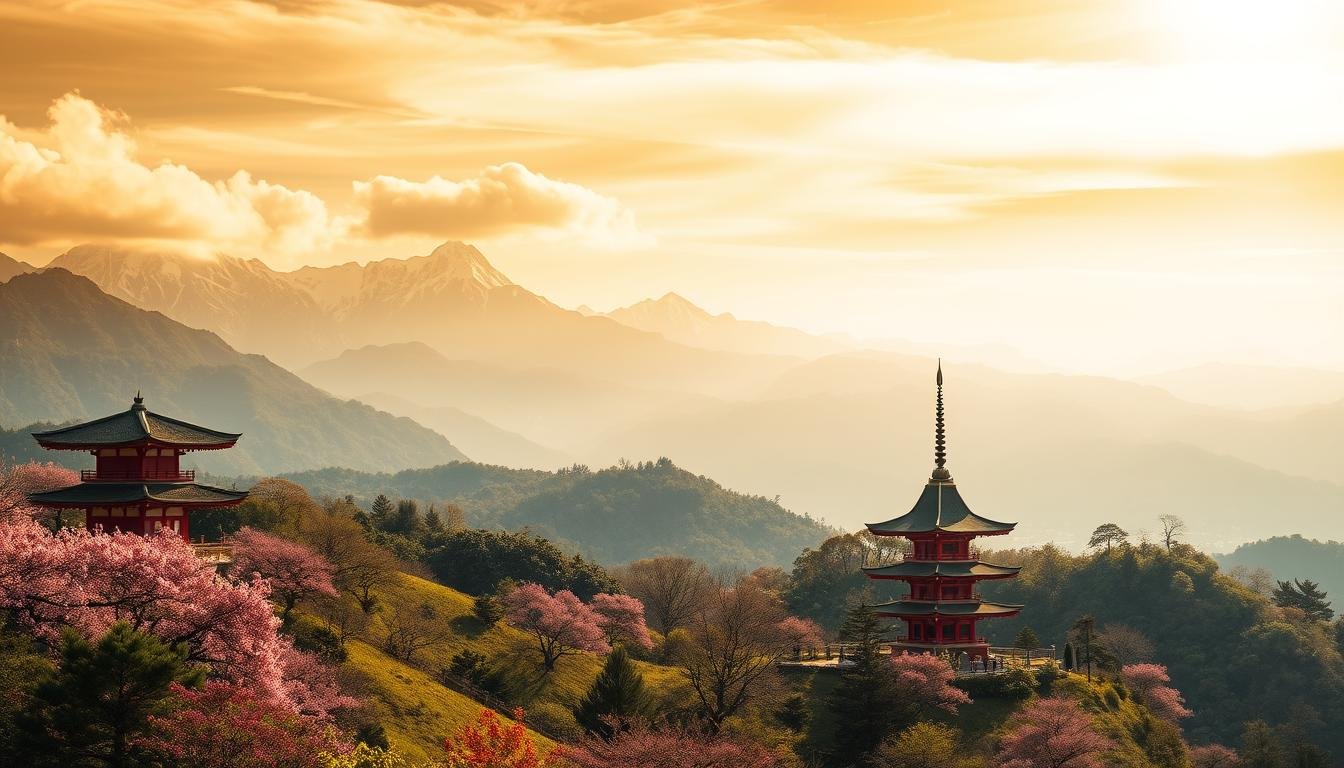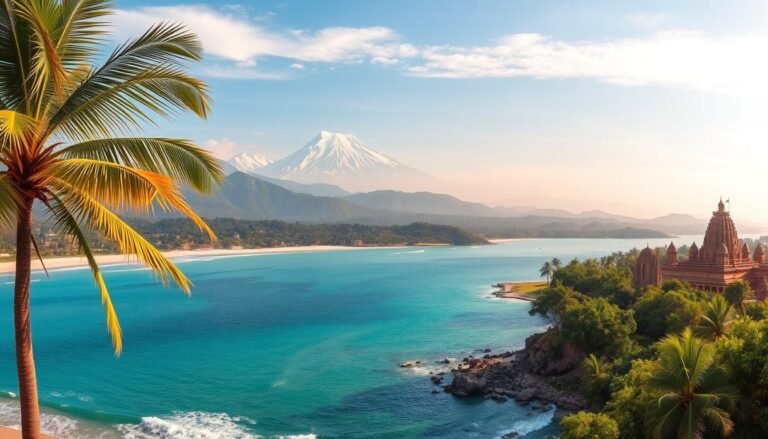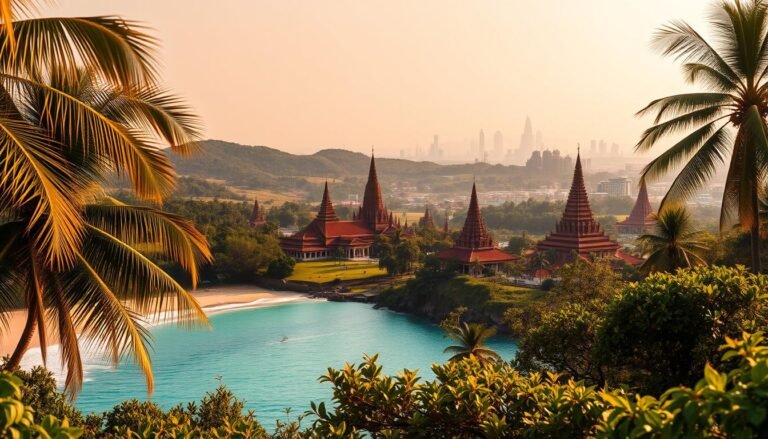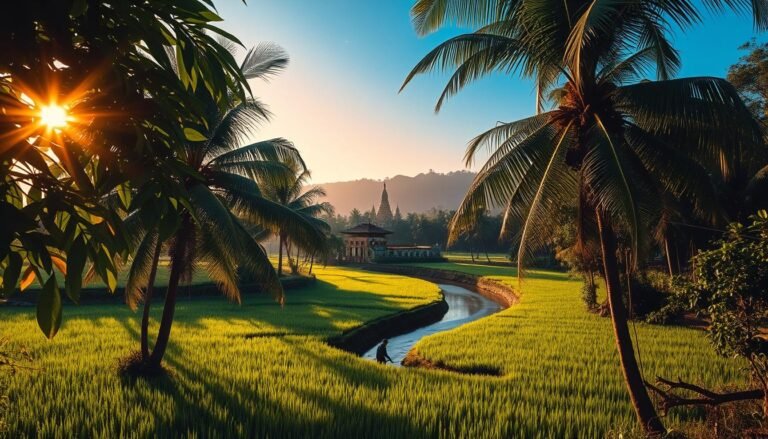Go to East Asia: Uncover the Region’s Captivating Attractions
Go to East Asia: East Asia is a treasure trove of ancient traditions, modern marvels, and breathtaking landscapes, making it a captivating destination for travelers worldwide.
The region is home to 1.6 billion people and boasts world-class metropolises like Tokyo, Seoul, Shanghai, and Hong Kong, each offering a unique blend of cultural heritage and modern excitement.
From the towering skyscrapers of ultramodern cities to serene temples nestled in misty mountains, East Asia https://www.dotraveling.com/east-asia/presents a fascinating contrast that makes for unforgettable travel experiences across its diverse countries.
The Allure of East Asia’s Diverse Landscapes
With its rich history and breathtaking landscapes, East Asia stands out as one of the most fascinating regions in the world. The region’s diverse landscapes offer an incredible array of experiences, from the sprawling megacities of China and Japan to the pristine wilderness of Mongolia and the volcanic islands of Japan.
Ancient Civilizations and Modern Metropolises
East Asia is home to some of the world’s most ancient civilizations, with China standing out as a leading civilization for thousands of years. The Han and Tang dynasties, in particular, are regarded as the golden ages of Chinese civilization, during which China was not only strong militarily but also saw significant advancements in the arts and sciences. The juxtaposition of ancient and modern is perhaps most striking in East Asia’s major cities, where thousand-year-old temples stand alongside gleaming skyscrapers, creating a visual timeline of human achievement.
The region’s cities are not just hubs of historical significance but also centers of modern innovation and culture. For instance, Tokyo and Seoul are known for their cutting-edge technology, while cities like Beijing and Xi’an offer glimpses into China’s rich past through their well-preserved historical sites.
| City | Ancient Attractions | Modern Highlights |
|---|---|---|
| Beijing, China | Great Wall of China, Forbidden City | Modern skyscrapers, Olympic Park |
| Tokyo, Japan | Meiji Shrine, Senso-ji Temple | Neon districts, Tokyo Tower |
| Seoul, South Korea | Gyeongbokgung Palace, Bukchon Hanok Village | K-pop culture, Myeong-dong shopping |
Natural Wonders from Mountains to Islands
The natural landscapes of East Asia are equally impressive, featuring iconic mountains like Mount Fuji, the vast Gobi Desert, lush rice terraces in China, and thousands of islands dotting the coastlines of Japan, Korea, and Taiwan. East Asia’s geography has profoundly shaped its cultures and people, with mountain ranges and seas creating natural boundaries that allowed distinct civilizations to develop their own unique identities while still sharing certain cultural elements.
The region’s diverse ecosystems support remarkable biodiversity, from the giant pandas of China’s bamboo forests to the unique marine life in the waters surrounding Japan and Taiwan. This biodiversity is a testament to the region’s complex geography and climate, which have created a variety of habitats for a wide range of flora and fauna.
In conclusion, East Asia’s diverse landscapes, rich history, and vibrant cultures make it a captivating destination for travelers from around the world. Whether you’re interested in exploring ancient civilizations, experiencing modern metropolises, or marveling at natural wonders, East Asia has something to offer.
Countries and Regions to Explore in East Asia
East Asia, a region that seamlessly blends tradition with modernity, is home to numerous countries and regions worth visiting. This part of the world is characterized by its diverse cultures, breathtaking landscapes, and rich histories, offering travelers a wide range of experiences that cater to different interests.
China: A Vast Array of Cultural and Natural Treasures
China, one of the world’s oldest civilizations, boasts a vast array of cultural and natural treasures. From the futuristic urban jungles of Shanghai and Beijing to the remote wilderness of Tibet and Inner Mongolia, China’s diverse landscapes and historical sites make it a compelling destination for travelers. The country’s autonomous regions, such as Tibet, Xinjiang, and Inner Mongolia, offer unique cultural experiences that differ significantly from the Han Chinese culture.
Japan: Land of Beautiful Contrasts
Japan is a country that beautifully contrasts ultramodern technology with ancient traditions. Its efficient bullet trains connect vibrant cities like Tokyo and Osaka with tranquil rural areas and historic towns like Kyoto. Visitors can experience Japan’s unique blend of modernity and tradition through its temples, gardens, and cultural festivals.
South Korea: Innovation and Traditional Heritage
South Korea has emerged as a cultural powerhouse, combining a rich historical heritage with cutting-edge technology and globally influential pop culture. Travelers can explore the country’s historical palaces, experience its vibrant nightlife, and enjoy its renowned cuisine, making it an increasingly popular destination.
Taiwan: Island of Sharp Contrasts
Taiwan presents travelers with dramatic mountain scenery, vibrant night markets, and a unique cultural identity that blends Chinese, Japanese, and indigenous influences. The island offers a mix of bustling cities, beautiful landscapes, and cultural experiences that make it an attractive destination for travelers.
Hong Kong and Macau: Unique Administrative Regions
The special administrative regions of Hong Kong and Macau offer distinct experiences shaped by their colonial histories. Hong Kong is known for its dramatic skyline, while Macau boasts a blend of Portuguese and Chinese influences. Both regions provide a unique blend of cultural heritage and modern attractions.
North Korea: The World’s Most Secretive Society
North Korea remains largely closed to independent travelers but offers limited guided tours for those interested in experiencing one of the world’s most isolated societies. Visitors can gain a unique insight into the country’s culture and daily life through these guided tours.
Mongolia: The Heart of the Mongol Empire
Mongolia provides a stark contrast to its densely populated neighbors, with vast open steppes, nomadic traditions, and the legacy of the Mongol Empire. Adventurous travelers can experience the country’s natural beauty, rich history, and unique cultural heritage.
East Asia’s diverse countries and regions offer a wealth of travel experiences, from cultural heritage sites to modern cities and breathtaking natural landscapes. Whether you’re interested in history, culture, food, or adventure, East Asia has something to offer every kind of traveler.
Captivating Cities You Must Visit
East Asia is home to some of the world’s most captivating cities, where ancient traditions meet modern innovations. These urban centers offer a unique blend of historical landmarks, cultural experiences, and futuristic developments that cater to all kinds of travelers.
Tokyo: Urban Jungle with Glimpses of Old Japan
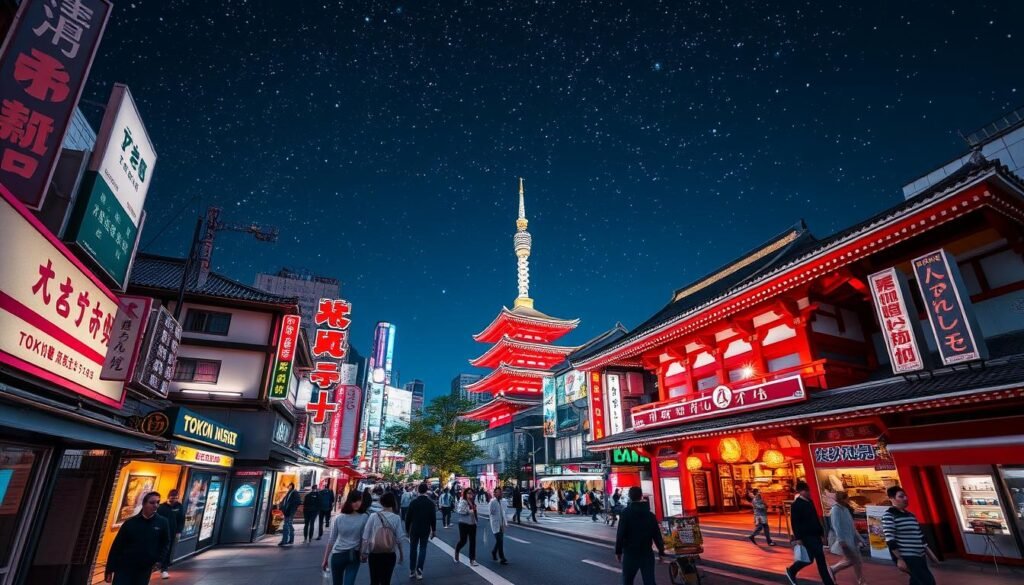
Tokyo stands as the quintessential East Asian metropolis, a sprawling urban landscape where neon-lit skyscrapers tower over tranquil temple gardens, and traditional craftsmen work just blocks away from cutting-edge technology showrooms. Visitors can explore the city’s many attractions, from the famous Shibuya Crossing to the historic Asakusa district.
Beijing: Five Dynasties of Cultural Sites
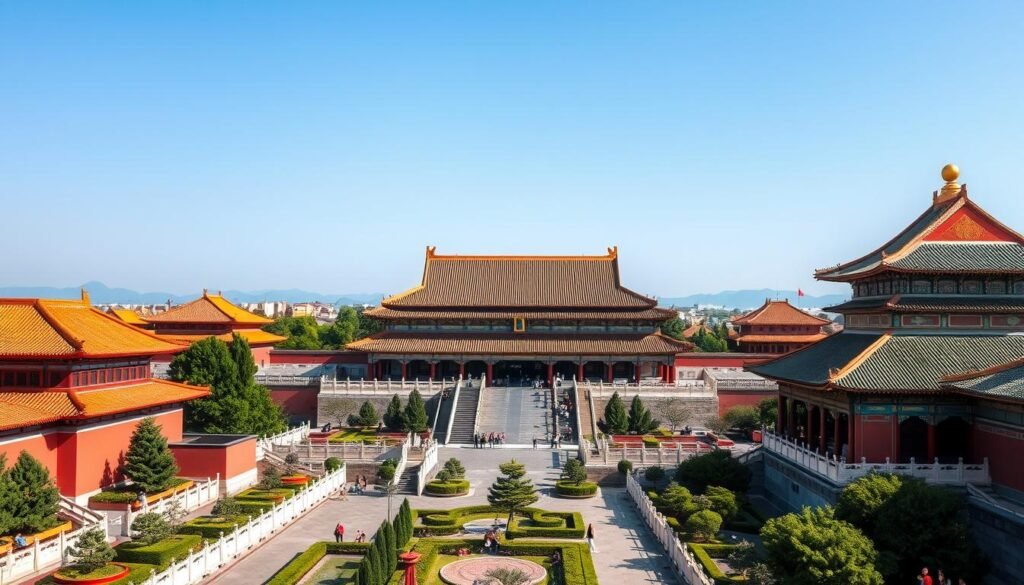
Beijing offers visitors an unparalleled concentration of historical sites spanning multiple dynasties, from the magnificent Forbidden City to the Summer Palace. The city has survived five dynasties, the Communist Revolution, and the Cultural Revolution, with over 800 years of ancient cultural sites found throughout this very modern city.
Seoul: Palaces, Food, and Vibrant Nightlife
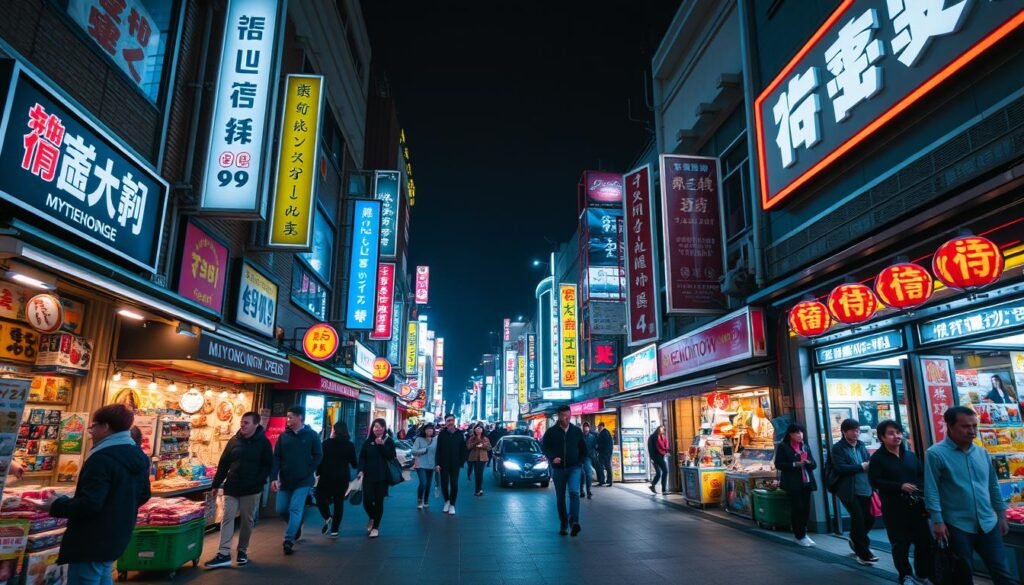
Seoul has emerged as a trendsetting city where Korea’s traditional palaces and markets coexist with innovative architecture, a vibrant fashion scene, and a nightlife that never seems to sleep. Visitors can explore the Gyeongbokgung Palace, try street food in Myeong-dong, and experience the city’s energetic nightlife.
Shanghai: Ultramodern Cosmopolitan Metropolis
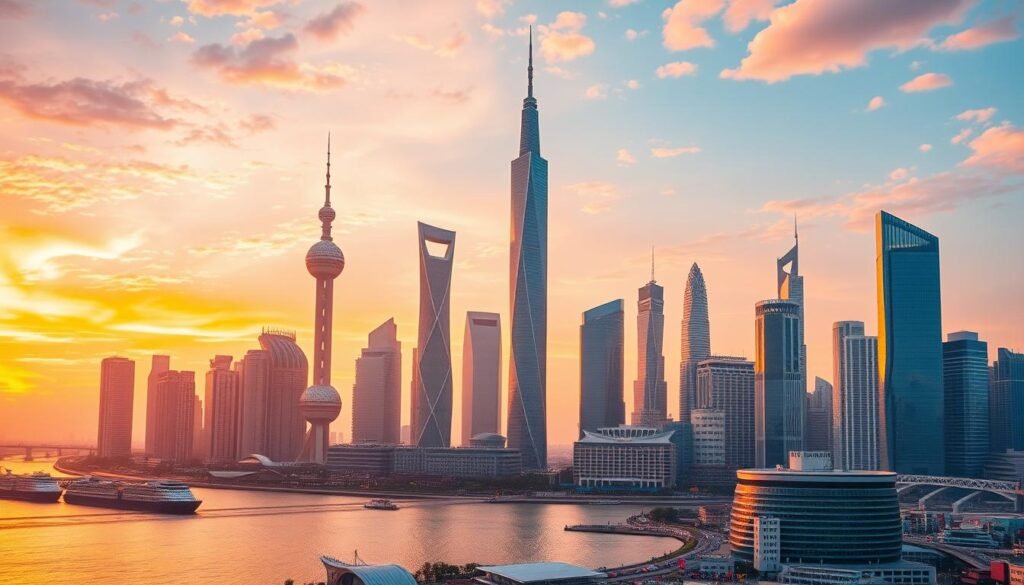
Shanghai showcases China’s economic miracle with its futuristic Pudong skyline and historic Bund waterfront, creating one of the world’s most photogenic cityscapes. The city offers a blend of modern and traditional attractions, from the Oriental Pearl Tower to the Yu Garden.
Hong Kong: Asia’s World City
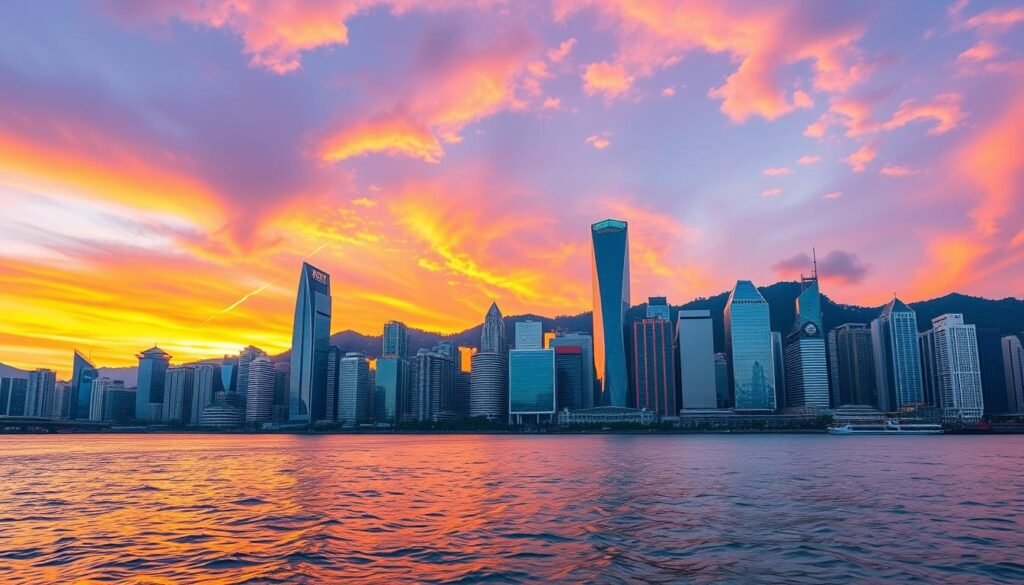
Hong Kong’s dramatic setting between mountains and sea creates a unique urban environment where British colonial heritage blends with Chinese traditions beneath one of the world’s most recognizable skylines. Visitors can enjoy the city’s shopping, dining, and entertainment options, as well as take a tram to the top of Victoria Peak.
Kyoto: Japan’s Cultural Heart
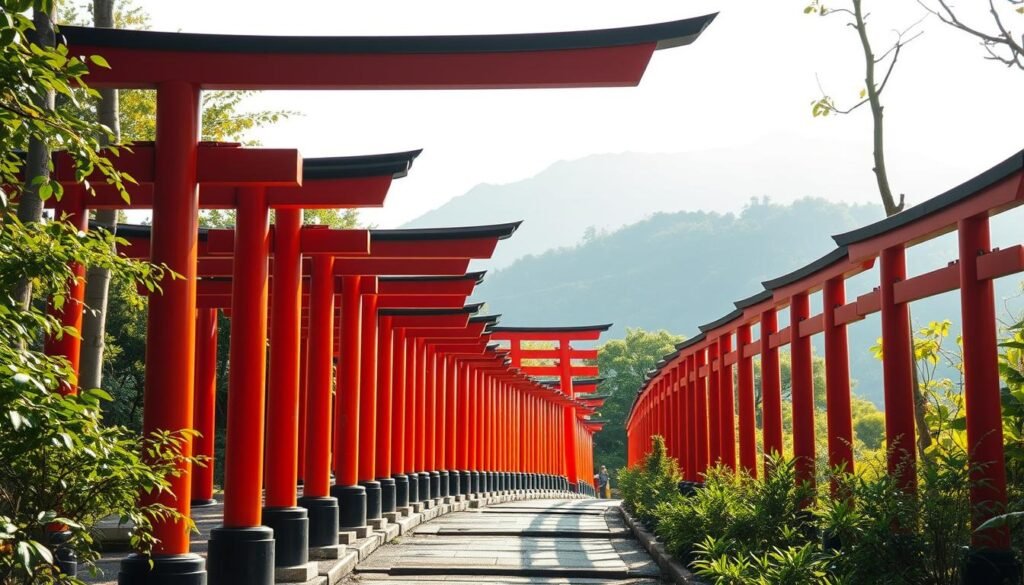
Kyoto preserves Japan’s cultural heart with over 1,600 Buddhist temples, 400 Shinto shrines, and countless traditional gardens, teahouses, and artisan workshops. Visitors can explore the city’s many cultural sites, including the Fushimi Inari shrine and the Kinkaku-ji temple.
Taipei: Center of Government, Commerce, and Culture
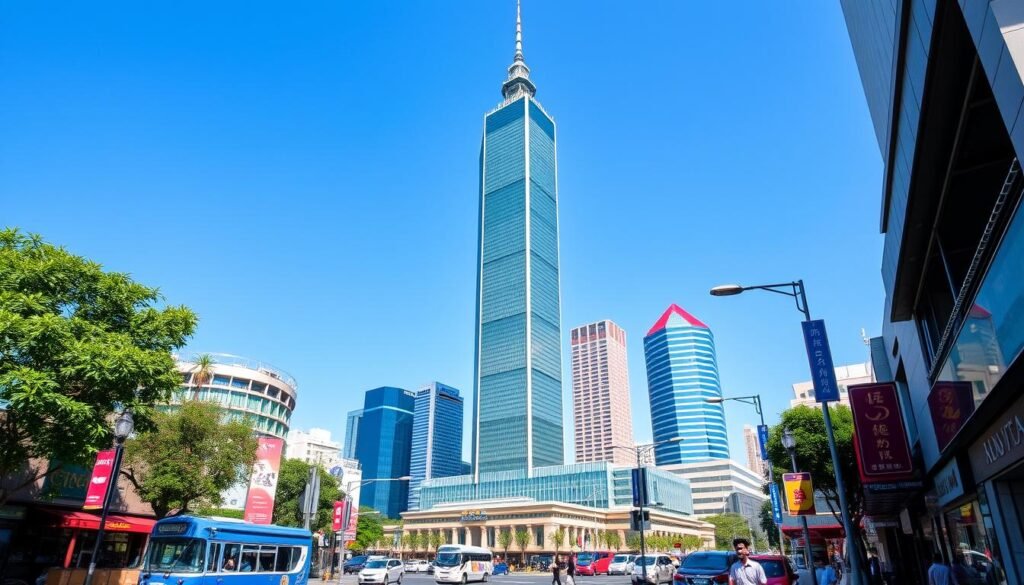
Taipei offers a more manageable urban experience with its blend of Chinese, Japanese, and Western influences, world-famous night markets, and the landmark Taipei 101 skyscraper. Visitors can explore the city’s many attractions, from the National Palace Museum to the Longshan Temple.
Breathtaking Natural Destinations
The diverse geography of East Asia offers travelers a wide range of breathtaking natural destinations. From iconic mountains and ancient forests to dramatic coastlines and remote islands, this region is a paradise for nature lovers and adventure seekers.
Mount Fuji: Japan’s Iconic Snow-Topped Volcano
Mount Fuji stands as Japan’s most recognizable natural landmark, a perfectly symmetrical volcano that has inspired artists and pilgrims for centuries. Hikers can challenge themselves on trails that offer rewarding panoramic views.
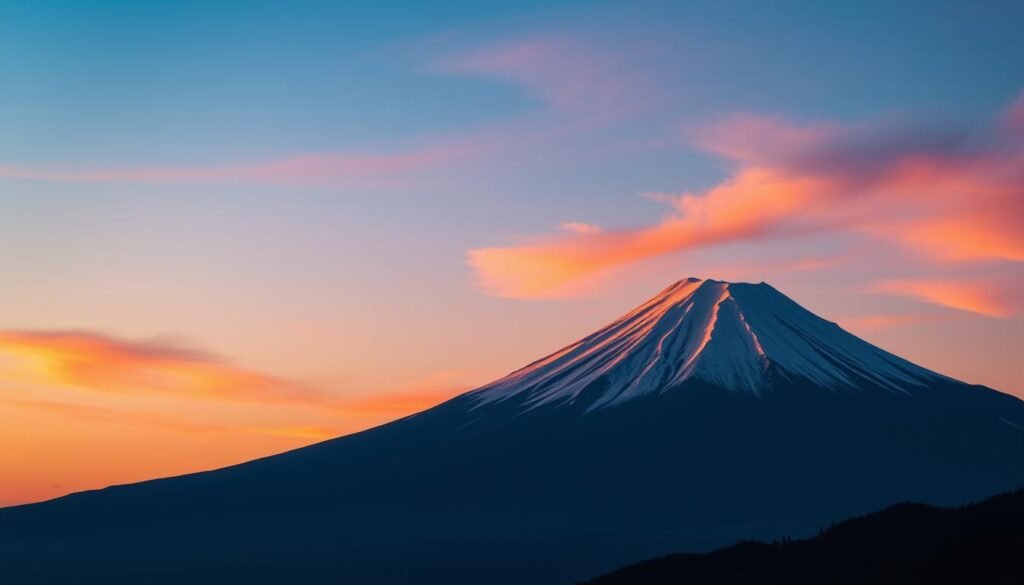
Great Wall of China: 8,000 km of History
The Great Wall of China represents humanity’s most ambitious building project, snaking across mountains and valleys for thousands of kilometers. Visitors can explore sections ranging from fully restored tourist-friendly segments to remote, crumbling ruins.
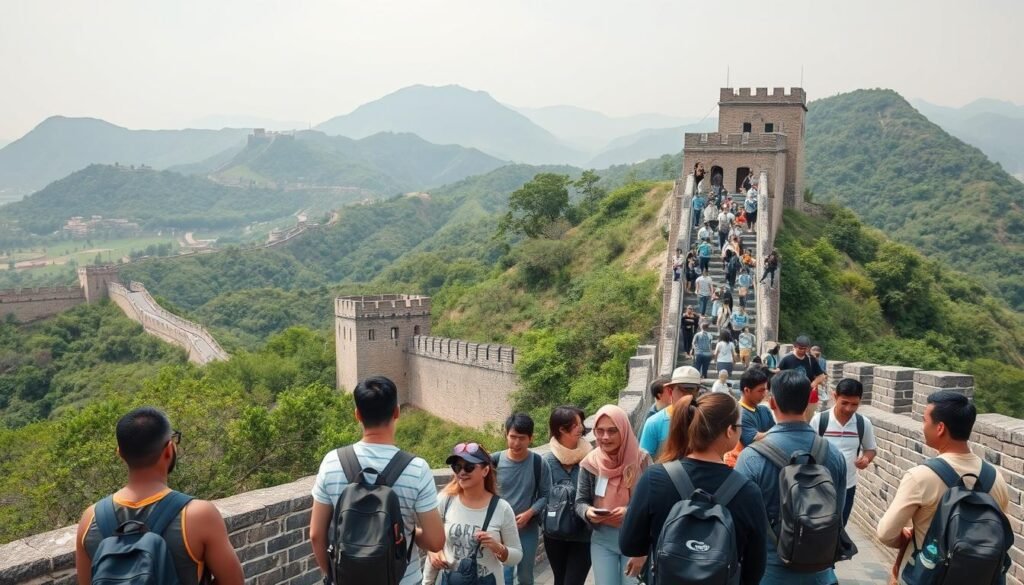
Taroko Gorge: Taiwan’s Incredible Hiking Paradise
Taroko Gorge presents a dramatic landscape of marble cliffs, rushing rivers, and lush vegetation, with hiking trails that range from easy walks to challenging multi-day treks through some of East Asia’s most beautiful scenery.
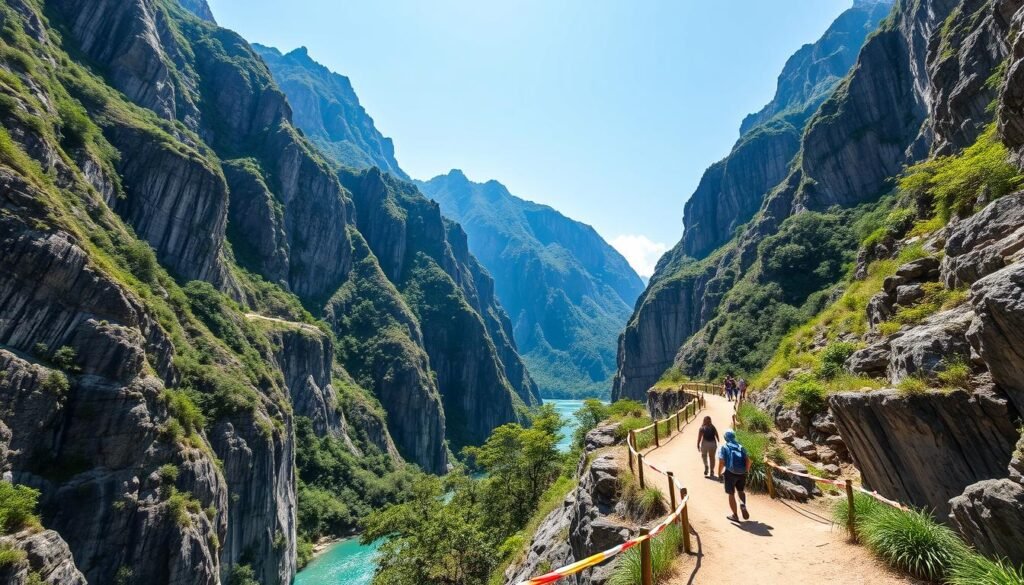
Seoraksan National Park: South Korea’s Mountain Range
Seoraksan National Park showcases South Korea’s natural beauty with craggy peaks, clear mountain streams, and vibrant seasonal foliage, attracting nature lovers and photographers throughout the year.

Altai Tavan Bogd: Mongolia’s Eagle Hunters and Highest Peaks
Altai Tavan Bogd National Park offers adventurous travelers the chance to experience one of East Asia’s last true wilderness areas, home to traditional eagle hunters, snow leopards, and the country’s highest mountains.

Tibet: Mysterious Place in the Himalayas
Tibet’s high-altitude landscapes create an otherworldly environment of vast plateaus, sacred lakes, and towering Himalayan peaks, complemented by unique cultural traditions that have evolved in this remote region.
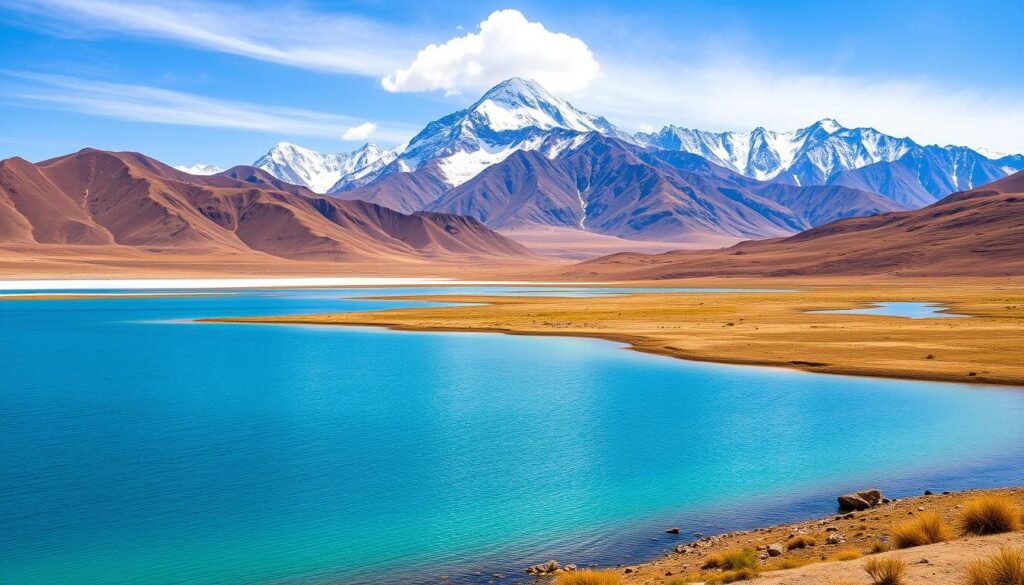
East Asia’s natural destinations offer a wealth of experiences for travelers, from the majestic beauty of its mountains and forests to the tranquility of its coastlines and islands. Whether you’re hiking, sightseeing, or simply taking in the views, East Asia’s diverse landscapes are sure to leave a lasting impression.
When to Go to East Asia: Seasonal Highlights
The timing of your trip to East Asia can significantly impact your travel experience, as the region’s distinct seasons bring about unique landscapes and cultural celebrations.
East Asia’s climate varies greatly from north to south, resulting in diverse seasonal experiences across the region. Understanding these seasonal variations is key to making the most of your trip.
Spring: Cherry Blossoms and Mild Temperatures
Spring, which spans from March to May, is perhaps the most celebrated season in East Asia. During this time, cherry blossoms sweep across Japan and Korea, creating a magical pink canopy in cities and countryside alike. The temperatures remain pleasantly mild, making it ideal for sightseeing.
Summer: Festivals and Island Escapes
Summer brings vibrant festivals throughout the region, from Japan’s spectacular fireworks displays and Obon celebrations to dragon boat races in Hong Kong and Taiwan. Travelers should be prepared for heat, humidity, and occasional typhoons in coastal areas during these months.
Autumn: Spectacular Foliage and Harvest Celebrations
Autumn, which lasts from September to November, transforms East Asia with spectacular foliage as maple and ginkgo trees turn brilliant shades of red, orange, and gold. This creates stunning natural displays in places like Kyoto, Seoul’s palaces, and China’s Yellow Mountains.
Winter: Snow Activities and Lunar New Year
Winter, spanning from December to February, offers unique experiences, from the snow festivals of Hokkaido and skiing in South Korea to Lunar New Year celebrations that bring the region alive with color, food, and family gatherings. Travelers should be prepared for cold temperatures in northern areas during this time of the year.
Each country in East Asia experiences these seasons slightly differently due to geography, with tropical Taiwan and Hong Kong remaining relatively warm year-round, while northern China and Mongolia experience extreme temperature variations.
Planning Your East Asia Adventure
East Asia, with its rich history and modern marvels, is a traveler’s paradise that requires careful planning to explore fully. The region’s vast size and incredible diversity mean that travelers must consider several factors when planning their trip.
Duration of Stay in Each Country
Deciding how long to spend in each East Asian country depends on your interests and available time. For first-time visitors, Japan and China typically require more time due to their vast attractions, while smaller countries like South Korea or Taiwan can be explored in less time.
A general guideline is to allocate 2-3 weeks for Japan, 3-4 weeks for China (including Hong Kong), 1-2 weeks for South Korea, and 1 week for Taiwan. However, this can be adjusted based on your specific interests and travel style.
Sample Itineraries: 2 Weeks to 3 Months
Sample itineraries for East Asia can vary greatly, from a focused two-week exploration of Japan’s main islands to an ambitious three-month journey covering the highlights of China, Japan, Korea, and Taiwan.
| Duration | Itinerary |
|---|---|
| 2 weeks | Explore Japan’s main islands, visiting Tokyo, Kyoto, and Osaka. |
| 1 month | Visit Japan and South Korea, experiencing the cultural heritage and modern cities of both countries. |
| 3 months | Cover the highlights of China, Japan, Korea, and Taiwan, delving deep into each country’s history, culture, and natural beauty. |
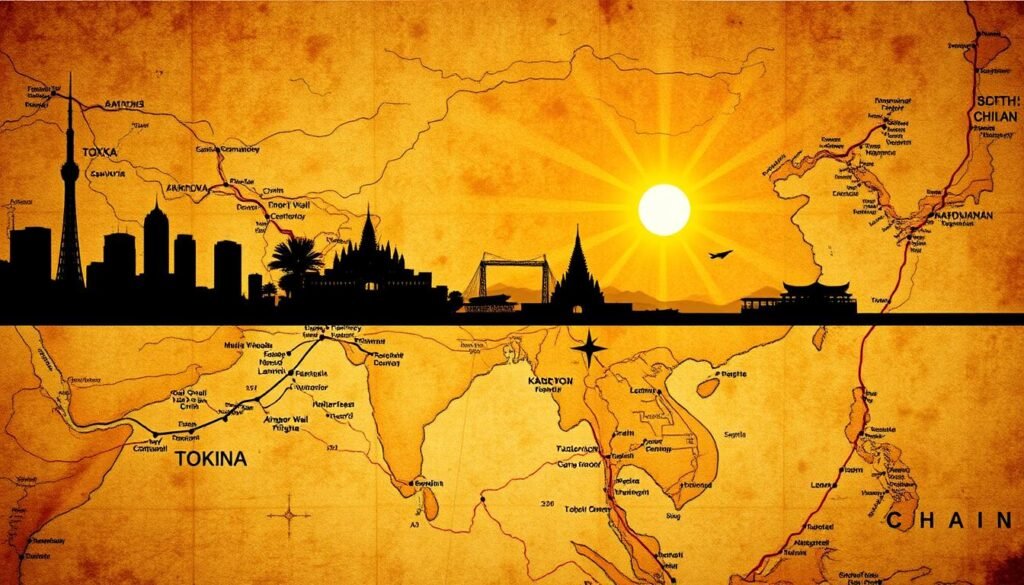
Combining East Asia with Southeast Asia
Many travelers choose to combine East Asia with Southeast Asia in a longer trip. While this works well geographically, it requires careful planning due to the significant cultural and climatic differences between the regions.
When planning your East Asia adventure, consider seasonal factors like cherry blossom season in Japan or autumn foliage in Korea, which can significantly enhance your experience but also mean higher prices and larger crowds.
Transportation: Getting Around East Asia
Navigating East Asia is made easy with its diverse and efficient transportation systems. Whether you’re traveling between countries or exploring within them, the region offers a range of options to suit every need and budget.
Flying Between Countries and Regions
Flying remains the most practical way to travel between countries in East Asia. Numerous budget airlines like AirAsia, Peach, and Spring Airlines offer affordable connections between major cities throughout the region, making it easy to explore multiple destinations without breaking the bank.

High-Speed Rail Networks in Japan, China, and Korea
High-speed rail networks represent the crown jewel of East Asian transportation. Japan’s Shinkansen, China’s extensive high-speed network, and Korea’s KTX offer comfortable, punctual service at speeds exceeding 300 km/h, making them an attractive option for both short and long-distance travel.
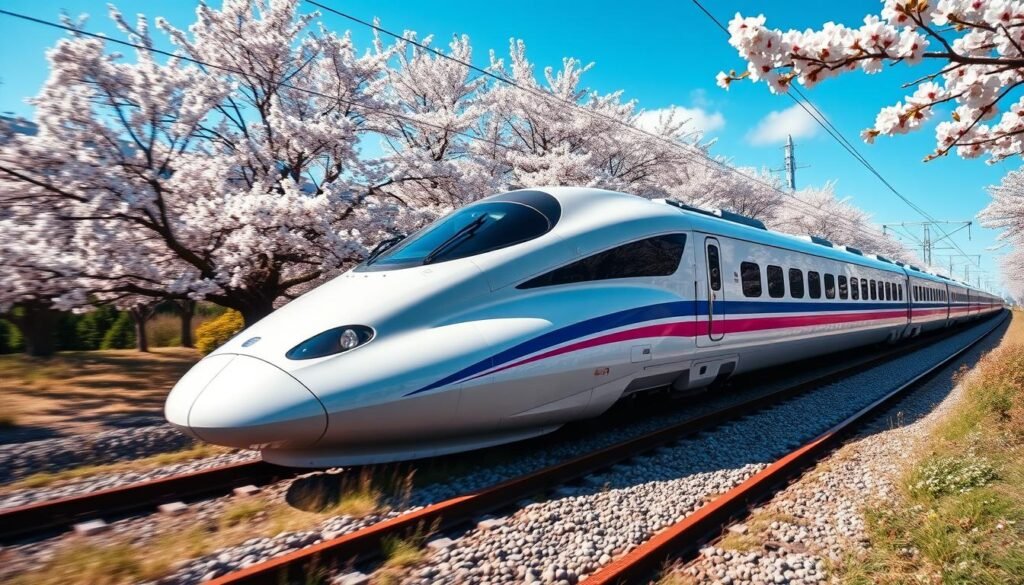
Local Transportation in Major Cities
Major East Asian cities boast some of the world’s best public transportation systems. Tokyo, Seoul, Hong Kong, and Shanghai feature comprehensive subway networks that make navigating these sprawling metropolises surprisingly straightforward.
The Trans-Siberian Railway Adventure
The legendary Trans-Siberian Railway offers adventurous travelers an alternative route into East Asia. With the main line running to Vladivostok and branch lines connecting to Beijing, it provides a scenic overland journey from Europe that’s hard to forget.

Ferry Connections Between Islands and Countries
Ferry connections play an important role in East Asian transportation, linking Japan with South Korea, mainland China with Taiwan, and providing access to thousands of islands throughout the region. They offer a relaxing way to see the coastal scenery and island life.
In conclusion, East Asia’s transportation network is a testament to the region’s blend of tradition and modernity. From the efficiency of high-speed trains to the charm of traditional ferries, travelers have a wealth of options to explore this vibrant region.
Visa Requirements for UK Travelers
Before embarking on your East Asian journey, it’s crucial to grasp the visa regulations that apply to UK citizens. The region is diverse, with countries having different requirements that can change with little notice.
China Visa Application Process
China requires most UK travelers to obtain a visa in advance. The application process involves submitting detailed itineraries, hotel bookings, and sometimes an invitation letter. Transit visas are available for short stays in certain cities.
Japan and South Korea Entry Requirements
Both Japan and South Korea offer visa-free entry for British citizens staying up to 90 days. This makes them particularly convenient for UK travelers looking to explore East Asia without extensive paperwork.
Taiwan Visa-Free Entry
Taiwan provides UK passport holders with visa-free entry for stays up to 90 days, requiring only a passport valid for at least six months beyond the planned departure date.
Hong Kong and Macau Immigration
Hong Kong and Macau allow British citizens to enter without a visa for stays of up to six months and 30 days, respectively. These special administrative regions of China are easily accessible for UK travelers.
North Korea Tour Permits
North Korea remains one of the world’s most restricted destinations, requiring all visitors to book through authorized tour operators who arrange the necessary permits. Independent travel is not permitted under any circumstances.
Mongolia Visa Information
Mongolia offers visa-free entry for UK citizens staying up to 30 days. Travelers planning longer stays or business activities will need to apply for the appropriate visa through the Mongolian embassy.
Understanding these visa requirements is essential for a smooth and enjoyable trip to East Asia. It’s always a good idea to check the latest regulations before your travel dates.
Where to Stay: Accommodation Options
Travelers to East Asia can choose from a myriad of accommodation options, each with its unique charm. Whether you’re looking to indulge in luxury, experience traditional hospitality, or stay within a budget, East Asia has something for everyone.
Luxury Hotels and Resorts
For those seeking the epitome of luxury, East Asia boasts some of the world’s most exceptional hotels. International chains like Peninsula, Mandarin Oriental, and Aman offer properties in major cities such as Tokyo, Shanghai, and Seoul. These hotels often feature stunning designs by renowned architects, providing a truly luxurious experience.

Budget-Friendly Hostels and Guesthouses
On the other end of the spectrum, budget travelers can take advantage of East Asia’s excellent hostel networks, particularly in Japan, South Korea, and Taiwan. Clean, safe, and often stylish hostels provide affordable accommodation in convenient locations, making them ideal for travelers on a budget.

Traditional Stays: Ryokans, Hanoks, and Gers
For a truly authentic experience, consider staying in traditional accommodations. Japanese ryokans offer tatami floors and communal baths, while Korean hanok guesthouses are centered around courtyards, providing a glimpse into traditional life. In Mongolia, ger camps on the open steppe offer a unique opportunity to experience nomadic culture.
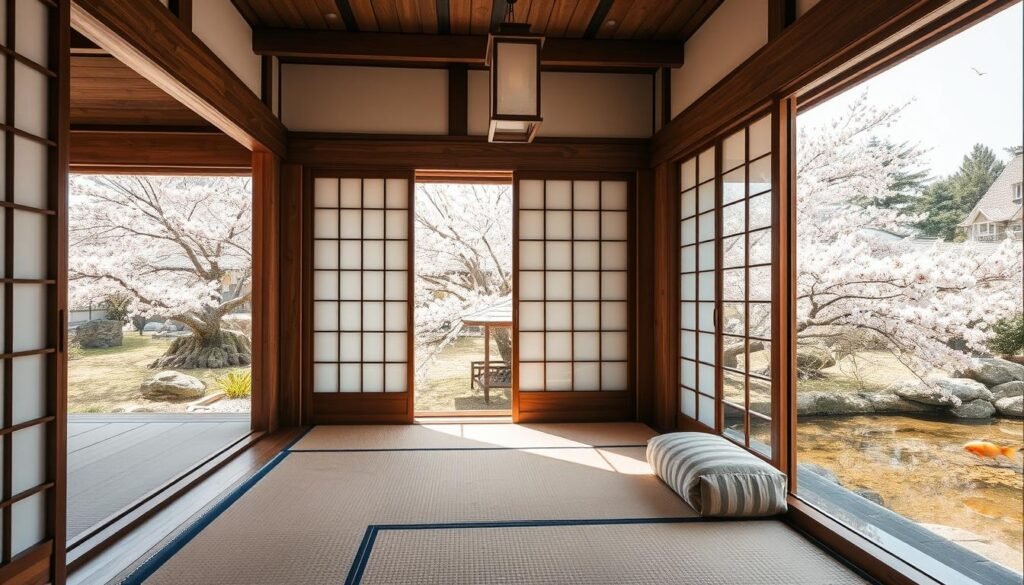
Unique Accommodation Experiences
East Asia is also home to some truly unique accommodation experiences. Capsule hotels, originally pioneered in Japan, offer minimalist sleeping pods that are both affordable and efficient. Additionally, temple stays in Buddhist monasteries across South Korea, Japan, and parts of China provide spiritual retreats where guests can participate in meditation and traditional ceremonies.

From the bustling cities to the serene islands, East Asia’s diverse accommodation options ensure that every traveler finds a place that suits their needs and enhances their travel experience.
East Asian Cuisine: A Culinary Journey
The culinary landscape of East Asia is as diverse as its cultures, with a rich tapestry of flavors and cooking techniques. This region is home to some of the world’s most renowned and beloved cuisines, each with its unique history, ingredients, and dining customs.
Chinese Regional Cuisines Beyond Sweet and Sour
Chinese cuisine is incredibly diverse, extending far beyond the familiar dishes found in Western Chinese restaurants. It encompasses eight major regional traditions, from the fiery spices of Sichuan to the delicate seafood preparations of Cantonese cooking. Each region boasts its own unique flavors and cooking techniques, reflecting the local ingredients and cultural heritage.
Japanese Food: From Sushi to Ramen
Japanese food culture emphasizes seasonality, presentation, and purity of flavors. From the meticulous art of sushi and sashimi to hearty ramen bowls and crispy tempura, Japanese cuisine offers a wide range of culinary experiences. The multi-course kaiseki ryori is a pinnacle of Japanese culinary artistry, showcasing the country’s dedication to culinary excellence.
Korean BBQ, Kimchi, and Street Food
Korean cuisine centers around communal dining experiences like Korean BBQ, where diners cook marinated meats at the table. These meals are complemented by numerous banchan (side dishes), including the iconic fermented kimchi that appears at virtually every meal. Korean street food is also gaining popularity worldwide, with dishes like tteokbokki and hotteok becoming favorites among food enthusiasts.
Taiwanese Night Markets and Bubble Tea
Taiwanese food culture shines brightest in its vibrant night markets, where visitors can sample xiaochi (small eats) like oyster omelets, stinky tofu, and beef noodle soup. The island’s most famous culinary export—bubble tea—can be found on nearly every street corner, offering a refreshing and unique beverage experience.
Dining Etiquette and Food Customs
Understanding basic dining etiquette is essential when traveling through East Asia. Mastering chopstick use, knowing when to pour drinks for others, and properly receiving food are crucial aspects of dining etiquette. Additionally, being aware of food allergies and dietary restrictions is important, as concepts like vegetarianism may be understood differently in East Asia.
| Cuisine | Signature Dishes | Dining Customs |
|---|---|---|
| Chinese | Peking duck, Xiaolongbao | Sharing dishes, using chopsticks |
| Japanese | Sushi, Ramen, Tempura | Emphasis on seasonality, slurping noodles |
| Korean | Korean BBQ, Kimchi stew | Communal dining, using metal chopsticks |
| Taiwanese | Beef noodle soup, Bubble tea | Night markets, street food culture |
East Asia’s culinary journey is a reflection of the region’s rich cultural heritage and diversity. By embracing the local cuisines and dining customs, travelers can experience the true essence of this fascinating region.
Budgeting for Your East Asia Trip
Budgeting effectively for an East Asia trip involves understanding the significant cost variations between countries in the region. With diverse cultures, landscapes, and lifestyles, East Asia offers a unique travel experience that can be tailored to various budgets.
Cost Comparison Between Countries
The cost of traveling in East Asia varies significantly from one country to another. Japan is typically the most expensive destination, with daily budgets for budget travelers starting around £80-100. In contrast, China offers better value in many areas, allowing travelers to explore for as little as £30-50 daily, depending on their style of travel. South Korea and Taiwan fall into the middle range, with daily costs approximately £50-70.
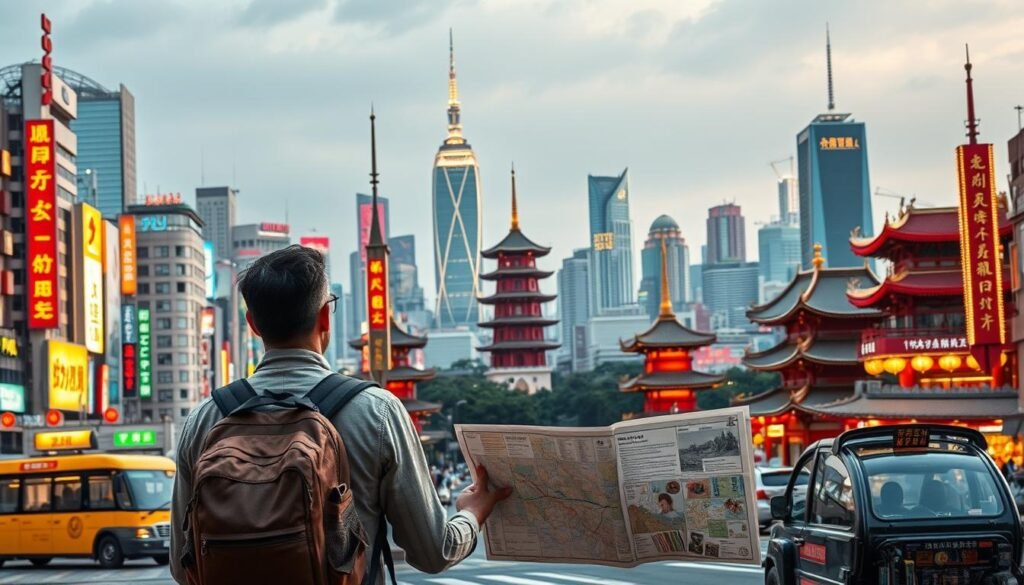
Money-Saving Tips for British Travelers
British travelers can save money by adopting a few strategic approaches. Booking flights well in advance, traveling during shoulder seasons, using local transportation apps, eating where locals eat, and taking advantage of tax-free shopping in countries like Japan can significantly reduce costs. Additionally, considering budget-friendly accommodations and activities can help keep expenses in check.
Expected Costs for Accommodation, Food, and Activities
Accommodation costs in East Asia vary dramatically, from £15-20 for a hostel bed in Tokyo to as little as £5-10 in parts of China. Mid-range hotels typically range from £40-100, depending on the country and city. Food costs can be surprisingly reasonable, with street food and simple restaurants offering meals for £3-8. Transportation is another significant budget consideration, with Japan’s rail passes and China’s extensive train network providing affordable options for long-distance travel.
Currency Exchange and Payment Methods
Understanding payment methods is crucial for a smooth trip. While cash remains king in many parts of East Asia, mobile payment systems like WeChat Pay and Alipay dominate in China. Credit cards are widely accepted in Japan, South Korea, and Taiwan, making it easier for tourists to manage their expenses. Being aware of the local currency and payment preferences can help travelers avoid unnecessary fees and hassles.
Why You Should Go to East Asia Now
East Asia’s rapidly evolving landscapes, both cultural and physical, make it an irresistible destination for curious travelers. The region is currently offering a compelling combination of factors that make it an ideal time to visit, from rapidly evolving cities to increasingly accessible rural areas and a tourism infrastructure that continues to improve year by year.
The Perfect Blend of Ancient and Modern
The region presents a perfect blend of ancient and modern experiences, where travelers can explore thousand-year-old temples in the morning and cutting-edge technology districts in the afternoon, creating a fascinating juxtaposition found nowhere else in the world.
Unparalleled Hospitality and Safety
East Asia consistently ranks among the world’s safest travel destinations, with low crime rates, excellent public transportation, and a culture of hospitality that makes solo travel particularly accessible, even for those who don’t speak local languages.
Value for Money Compared to European Destinations
Despite its reputation for expensive destinations like Tokyo, East Asia often offers better value for money than comparable European trips, with excellent public transportation, affordable food options, and reasonable accommodation in many areas.
Life-Changing Cultural Experiences
The cultural experiences available throughout East Asia can be genuinely life-changing, challenging Western perspectives and offering new ways of understanding everything from food and art to social relationships and spirituality, showing a different way of life.
In conclusion, now is the perfect time to visit East Asia and experience its unique blend of tradition and innovation. With its unparalleled hospitality, safety, and value for money, this destination is sure to leave a lasting impression on travelers.
Cultural Experiences Not to Miss
From ancient traditions to modern marvels, East Asia offers a diverse array of cultural experiences. Visitors can immerse themselves in the region’s rich heritage by participating in traditional festivals, tea ceremonies, and cultural performances, or by exploring religious sites and modern pop culture phenomena.
Traditional Festivals and Celebrations
East Asia is home to a wide range of traditional festivals that showcase the region’s vibrant cultural heritage. Japan’s summer matsuri festivals feature lantern processions and fireworks, while China’s Spring Festival celebrations and Korea’s Chuseok harvest holiday offer a glimpse into the region’s rich cultural traditions.
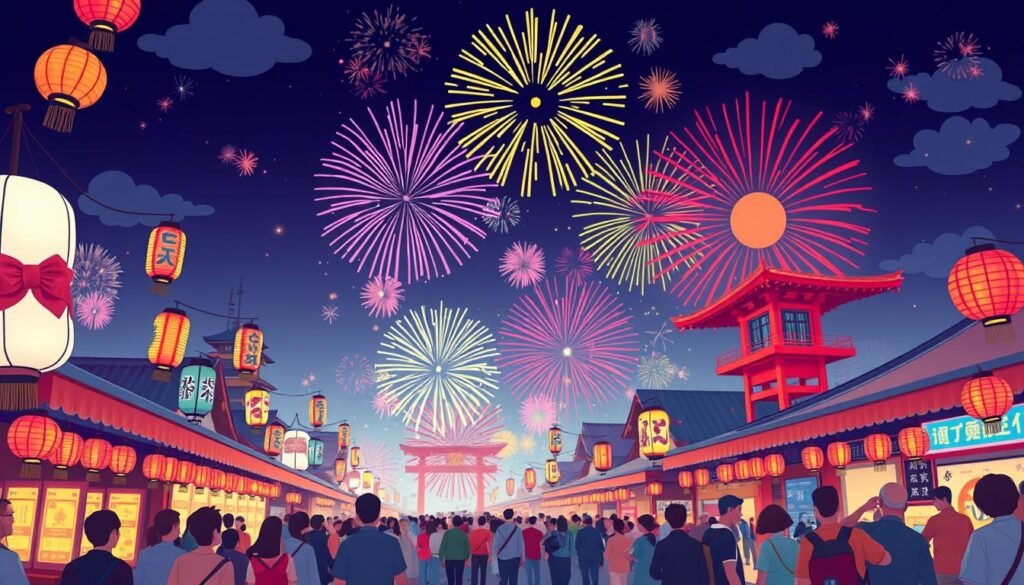
Tea Ceremonies and Cultural Performances
Tea culture is an integral part of East Asia’s cultural identity, with each country offering its unique approach to tea ceremonies. Visitors can experience Japan’s meditative chado (tea way) or Korea’s distinctive tea houses, gaining insight into local aesthetics and values.
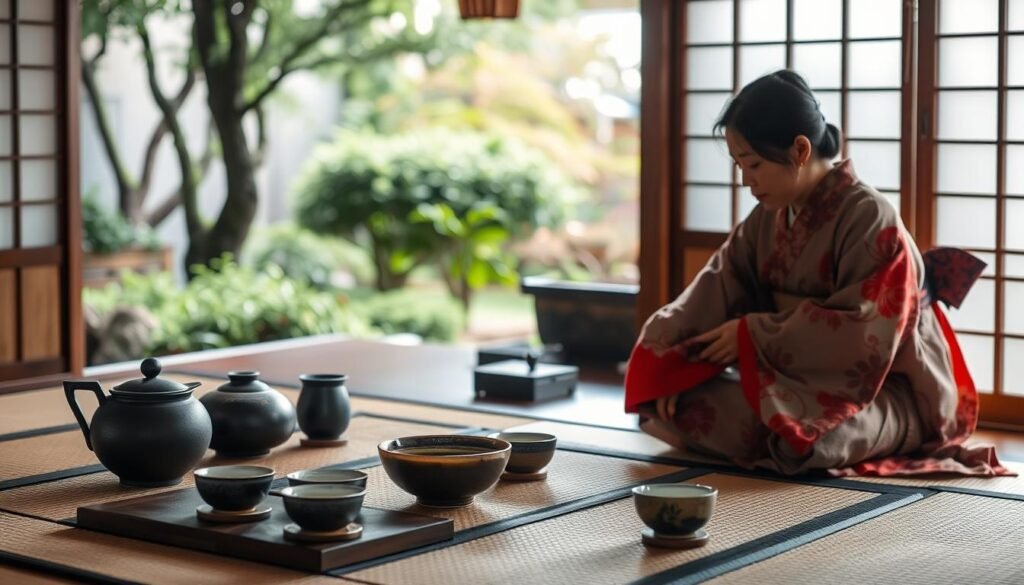
Religious Sites: Temples, Shrines, and Monasteries
East Asia is home to numerous religious sites that offer a window into the region’s spiritual traditions. From the serene Zen gardens of Kyoto’s Buddhist temples to the incense-filled Taoist shrines of Taiwan, these sites provide a glimpse into the region’s rich cultural heritage.
Modern Pop Culture: K-Pop, Anime, and Technology
East Asia is also a hub for modern pop culture, with K-pop music, Japanese anime and manga, and Chinese cinema offering accessible entry points for visitors interested in contemporary cultural expressions.
Shopping for Traditional Crafts and Souvenirs
Visitors to East Asia can purchase authentic souvenirs like Japanese ceramics, Chinese calligraphy, Korean hanbok fabric arts, and Taiwanese tea sets, often directly from the artisans who create them.
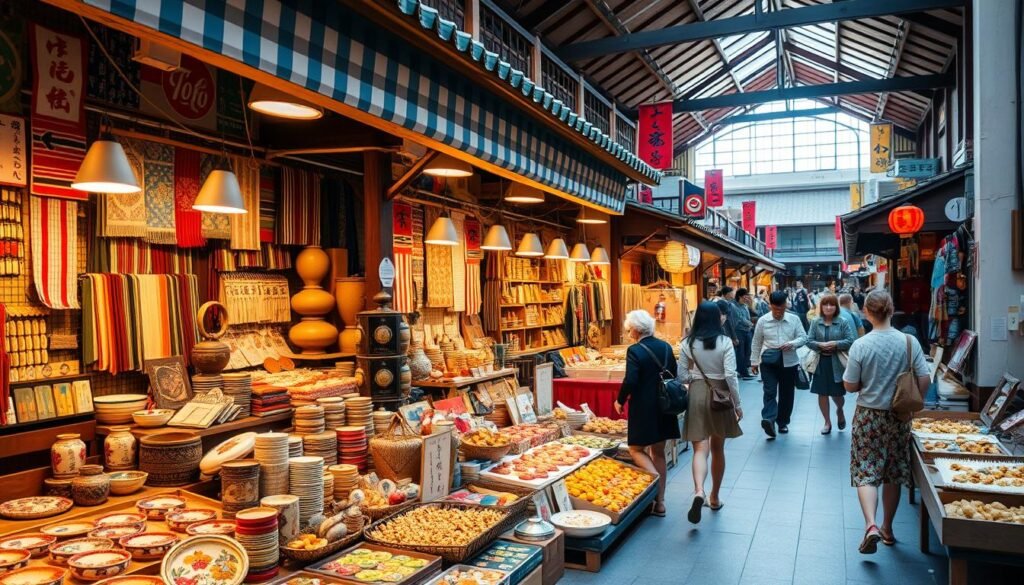
By engaging with the local culture, visitors can gain a deeper understanding of East Asia’s people and places, creating unforgettable experiences that will last a lifetime.
Language and Communication Tips
Communicating effectively in East Asia requires more than just knowing a few basic phrases. The region’s diverse languages and cultural nuances can be challenging for travelers, but with the right strategies, you can navigate these barriers and enhance your experience.
Basic Phrases in Chinese, Japanese, and Korean
Learning a few essential phrases in the local languages can go a long way in showing respect for the culture. In Mandarin Chinese, useful phrases include “nǐ hǎo” (hello), “xièxie” (thank you), “duōshao qián” (how much?), and “bù yào” (I don’t want). In Japanese, travelers should know “konnichiwa” (hello), “arigatō” (thank you), “sumimasen” (excuse me/sorry), and “ikura desu ka” (how much is it?). Korean basic phrases include “annyeonghaseyo” (hello), “kamsahamnida” (thank you), “joesonghamnida” (sorry), and “eolmaeyo?” (how much?).
English Proficiency Across the Region
English proficiency varies significantly across East Asia. While countries like Japan and China have lower levels of English speakers outside major tourist areas, Taiwan, Hong Kong, and Singapore offer more widespread English communication. Understanding these differences can help travelers prepare accordingly.
Translation Apps and Services
Modern translation apps have revolutionized travel in East Asia. Google Translate’s camera function allows for instant menu translation, while specialized apps like Papago work particularly well for Korean and Japanese languages. These tools can be invaluable in navigating language barriers.
Understanding Cultural Nuances in Communication
Understanding cultural communication nuances is essential in East Asia. Direct refusals are often considered impolite, subtle body language carries significant meaning, and concepts like “saving face” influence many interactions. Being aware of these nuances can help travelers communicate more effectively.
By combining basic language skills, an understanding of English proficiency in the region, the use of translation apps, and awareness of cultural nuances, travelers can significantly enhance their experience in East Asia.
Health and Safety Considerations
East Asia is generally a safe region for travelers, yet understanding the specific health and safety guidelines is key to a trouble-free trip. The region encompasses a diverse range of countries, each with its unique safety profile.
General Safety in East Asian Countries
Countries such as Japan, South Korea, Taiwan, and Singapore are known for their exceptionally low crime rates and highly efficient public services, making them among the world’s safest destinations. China, while generally safe for tourists, has regional variations that travelers should be aware of.
Healthcare and Travel Insurance
The quality of healthcare varies across East Asia. Major cities in Japan, South Korea, Taiwan, and Hong Kong offer world-class medical facilities. However, rural areas may have limited healthcare services. Comprehensive travel insurance is essential, as medical costs can be substantial, particularly in Japan.

Common Scams and How to Avoid Them
Tourists in East Asia may encounter scams such as tea ceremony scams in China, overcharging by taxis, and counterfeit goods. Being aware of these potential scams and taking necessary precautions can help minimize risks.
Emergency Contacts and British Consular Services
British travelers should register with the Foreign, Commonwealth & Development Office’s travel advice service before departure. Knowing the locations of British embassies and consulates in each country is also crucial for a safe trip.
Understanding and preparing for the health and safety considerations in East Asia can significantly enhance your travel experience, ensuring a memorable and trouble-free journey.
Packing Essentials for Your East Asia Adventure
As you prepare for your East Asia adventure, packing the right essentials is crucial for a smooth and enjoyable trip. The region’s diverse climates, cultural norms, and practical needs require careful consideration to ensure you’re well-prepared for your journey.
Seasonal Clothing Considerations
East Asia’s climate varies dramatically from south to north, making layering essential for most itineraries. Spring and autumn travelers should pack layers that can accommodate temperature fluctuations, while summer visitors need lightweight, breathable clothing and rain protection. Winter travelers to northern regions require serious cold-weather gear to combat the bitter cold.
For example, if you’re visiting southern China or Taiwan in the summer, be prepared for subtropical humidity, while northern China, Korea, and Hokkaido can be extremely cold in winter.
Technology and Adapters
When traveling to East Asia, it’s essential to consider your technology needs. Different countries use various power adapters, such as Type A/B in Japan, Type A/C/I in China, and Type C/F in South Korea. Packing the right power adapters will ensure you stay connected throughout your trip.
Consider portable Wi-Fi options for countries with limited free access and backup power banks for long travel days.

Medications and Health Supplies
It’s crucial to pack essential medications in their original packaging, along with prescriptions, as certain medications legal in the UK may be restricted in East Asian countries. Be aware of local regulations regarding medications, particularly those containing opioids or stimulants.
Don’t forget to pack any personal medical devices and a basic first-aid kit.
Cultural Sensitivity in Dress and Appearance
Cultural sensitivity in dress is important throughout East Asia. Modest clothing is recommended when visiting religious sites, while business casual attire is expected in upscale restaurants. Swimwear is generally restricted to beach and pool areas.
Being mindful of local customs will help you avoid unintended offense and enhance your cultural experience.
By packing wisely and being aware of the cultural and practical needs of your East Asia adventure, you’ll be well-prepared for an unforgettable journey.
Conclusion: The Journey of a Lifetime Awaits
As you traverse East Asia, the contrasts between the old and the new, the serene and the chaotic, create a travel experience unlike any other. This region offers travelers a journey that combines ancient traditions with futuristic innovations, creating experiences that challenge perspectives and create lasting memories unlike any other region in the world.
The diversity of experiences available throughout East Asia ensures that every traveler can find their own path, whether seeking spiritual enlightenment in remote temples, culinary adventures in bustling night markets, or technological wonders in gleaming urban centers. From Japan’s perfect balance of tradition and technology to China’s epic scale and ancient wonders, and from Korea’s vibrant contemporary culture to Taiwan’s natural beauty and culinary delights, East Asia promises a journey that will transform how you see the world.
While planning a trip to this region requires more preparation than some destinations, the rewards far outweigh the efforts, with cultural encounters, natural beauty, and personal discoveries that continue to resonate long after returning home. First-time visitors often find themselves planning return trips before they’ve even departed, as the depth and breadth of experiences available make it impossible to fully appreciate the region in a single visit.
The contrasts that define East Asia—between ancient and modern, chaotic and serene, familiar and utterly foreign—create a travel experience that challenges preconceptions and expands horizons in ways few other journeys can match. As East Asia continues to evolve and develop, now represents an ideal time to experience this dynamic region, where traditional ways of life still thrive alongside some of the world’s most innovative societies.
In conclusion, East Asia is a region that captivates the imagination, offering a journey that is both exhilarating and enlightening. Whether you’re drawn by the region’s diverse landscapes, vibrant cultures, or cutting-edge technology, East Asia promises an adventure that will leave you with unforgettable memories and a newfound appreciation for the world we live in.

